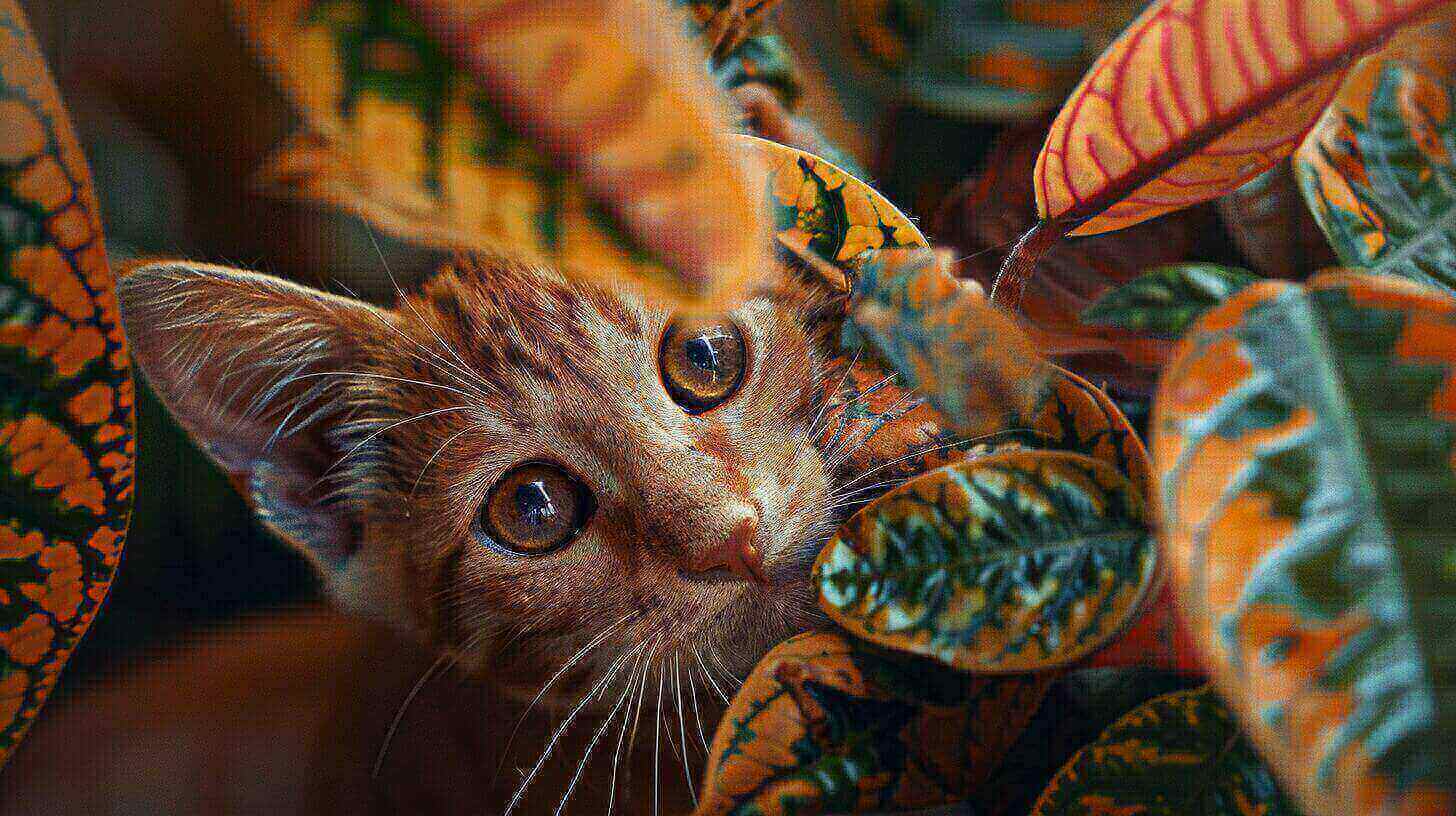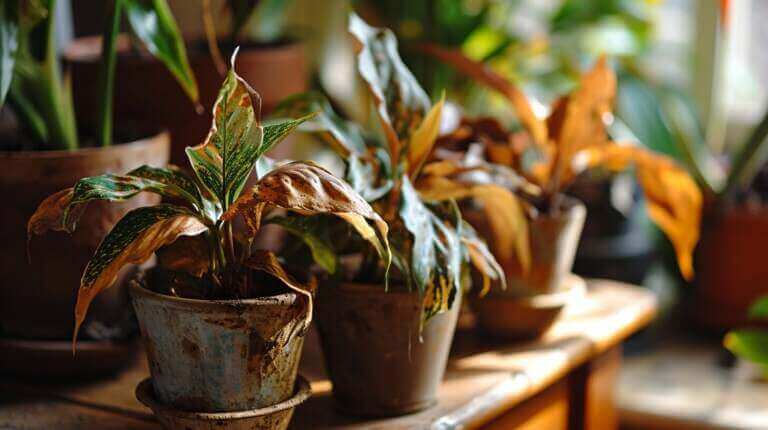Croton Toxicity Explained: Are Croton Plants Poisonous for Cats and Dogs?
As a pet owner, I always strive to create a safe environment for my furry friends. That’s why when it comes to choosing ornamental houseplants, I make sure to research their potential hazards. One plant that has caught my attention recently is the croton plant, scientifically known as Codiaeum variegatum.
Croton plants are known for their vibrant and colorful foliage, making them a popular choice for many households. However, what concerns me is their potential toxicity to cats and dogs. It’s important to be aware of the risks and take necessary precautions to keep our beloved pets safe.
Key Takeaways:
- Parts of the Croton plants can be toxic to cats and dogs if ingested or if the sap comes into contact with their skin.
- Ingestion of croton plants may cause mild oral and gastrointestinal irritation, resulting in symptoms such as drooling, vomiting, and diarrhea.
- Cats may experience additional symptoms such as mouth swelling and pawing at the face.
- If you suspect your pet has ingested or come into contact with croton plants, seek veterinary help immediately.
- To prevent croton poisoning, consider opting for pet-friendly plants or keeping croton plants out of reach of pets using various methods.
Signs and Symptoms of Crotons Poisoning in Pets
If a pet ingests parts of the plant, it can lead to various symptoms of croton poisoning. These may include:
- Drooling
- Vomiting
- Diarrhea
- Skin irritation
Cats may also experience mouth swelling and pawing at the face. In more severe cases, pets may lose their appetite, become lethargic, and show signs of depression. It is important to note that symptoms can vary depending on the severity of the poisoning and the individual pet’s reaction.
“Symptoms of croton poisoning may be mild or severe, depending on the amount ingested and the size of the pet.”
If you suspect your pet has been exposed to croton plants and is displaying any of these symptoms, it is important to seek veterinary help immediately. A veterinarian can assess the situation, provide appropriate treatment, and offer guidance on how to manage the symptoms and ensure your pet’s recovery.
Risk Factors
It’s important to be aware of the risk factors that can contribute to croton poisoning in pets. These include:
- Pets with curious behavior who like to explore and chew on plants
- Pets with a history of ingesting toxic plants
- Unsupervised access to indoor or outdoor gardens
Understanding these risk factors can help pet owners take necessary precautions to prevent croton poisoning and create a safe environment for their furry friends.
Immediate Actions
If you suspect your pet has ingested croton plants or is showing signs of poisoning, take these immediate actions:
- Remove any remaining pieces of the plant from your pet’s mouth.
- Rinse your pet’s mouth with water to minimize further ingestion of toxins.
- Contact your veterinarian for guidance and follow their instructions.
It’s crucial not to induce vomiting without consulting a veterinarian, as some toxins can cause further harm when expelled.
By being aware of the signs and symptoms of croton poisoning, pet owners can take prompt action to protect their pets and ensure their well-being.
Preventing Croton Poisoning in Dogs and Cats
To ensure the safety of our furry friends, it is important to take proactive measures in preventing croton poisoning. One effective method is to opt for pet-friendly plants instead of having croton plants in our homes. There are many beautiful and safe alternatives available that will still add a touch of greenery to your space.
If you decide to keep croton plants, it is crucial to keep them out of reach of pets. Consider using plant stands or hanging baskets to elevate the plants, making them inaccessible to curious paws. Alternatively, you can place them in separate rooms where pets are not allowed. By doing so, you create a safe environment for your pets while still enjoying the beauty of croton plants.
Training your pets to stay away from the plants can also be beneficial. Gentle redirection and positive reinforcement techniques can teach them to avoid the plants altogether. Additionally, using deterrents such as pet-safe sprays or citrus peels can help keep pets away from the plants by creating an undesirable scent or taste.
Regular pruning of croton plants not only helps maintain their size and shape but also reduces the risk of exposure for pets. By keeping the plants well-managed, you minimize the chances of accidental ingestion or contact with the sap. Remember to dispose of any pruned parts properly to prevent pets from accessing them.
FAQ
Can croton plants be toxic to cats and dogs?
Yes, croton plants can be toxic to cats and dogs if ingested.
What are the symptoms of croton poisoning in pets?
Symptoms of croton poisoning in pets may include drooling, vomiting, diarrhea, skin irritation, mouth swelling (in cats), pawing at the face (in cats), loss of appetite, lethargy, and signs of depression.
What should I do if I suspect my pet has been exposed to croton plants?
If you suspect your pet has been exposed to croton plants and is displaying any symptoms of croton poisoning, it is important to seek veterinary help immediately.
How can I prevent croton poisoning in my pets?
To prevent croton poisoning in pets, it is best to avoid having croton plants in your home. If you must have croton plants, keep them out of reach of pets using plant stands, hanging baskets, or placing them in separate rooms. Train pets to stay away from the plants and use deterrents such as pet-safe sprays or citrus peels. Regular pruning can also help reduce the risk of exposure for pets.







